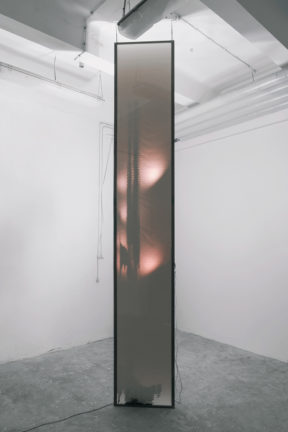Editorial
A non-work report
The new issue of the magazine raises the question whether all the
underpaid work/non-work was worth it? We have often thought that the
right approach to the issue of “non-work” would be to do nothing – to
simply obey the utopian suggestions of Guy Debord, a representative of
the Situationist International, or the old robber from the fairy tale about
Ruffiano and Sweeteeth, and just never work. What is work for us,
freelancers in the cultural sphere, and what is not? What is the difference
between idleness and effectively used leisure time? How can we identify
productive procrastination? How come we sometimes think of an
exhibition title during the morning shower or in a dream at night?
We know what work is and we have an idea of what probably will
be fun, but the range of differences between these two shows that their
relationship is rather complicated. Can work be fun? And can fun be
hard work? When do the two blend, so that you cannot tell one from
the other? Should work that has been so important since primitive
communism (while the gatherer-hunter society preferred the nomadic
way of life) be considered a priority, and fun a secondary lure of the
system saying that ideal work is also fun?
For many years, we have been experiencing a transition from a postindustrial
society to an information society. This fundamental civilisational
change emphasizes the difference between the common manufacturing
process and the expanding service sector that is essentially based on
virtual representation of anything. In general, such work is about sharing
information, which means that a digital society mixes leisure and work
time to such an extent that external freelancers, whose number is rapidly
increasing due to globalization, no longer know when they work and
when they do not.
The magazine issue no. 32 on non-work examines the border, the
hyphen between leisure time and work. The artists presented work on
various borderlands. Some of them will be presented at the 8th Fotograf
Festival (more in the supplement, p. 111), for example, Jennifer Lyn
Morone, an artist born in the USA, interviewed by Tereza Jindrová. In the
interview, Morone ponders the possibilities of capitalizing herself to resist
the misuse of personal data the current system benefits from. The text by
Benjamin Buchloh, a theorist and historian of art of the second half of the
20th century who uses Allan Sekula’s work to deal with the variability of
photography depending on the context of reading, is also telling. The title
of Buchloh’s article is an indirect reference to Sekula’s text Photography
Between Labor and Capital, underscoring Sekula’s position between
photographic practice and the theory of art. Buchloh also believes that the
critical subtext of art (as in the case of Sekula’s photographic series) is not
often recognized for political reasons. Are we blind to the contemporary
signs of societal development? Or are we just paralysed by ordinariness,
without any power to resist it?
Lars Tunbjörk used his sharp lens and flash to examine “the
curiosities of office everyday life”, as German curators Elisabeth
Pichler and Lena von Geyso wrote. His distortion of everyday life and
exaggeration of ordinariness seems like hard work on anti-work. Like
most of the artists presented in this issue, he combines the imaginary
private sphere and the public one into one whole. The personal is
political, says Natalie Drtinová, commenting on the work by Carrie Mae
Weems, and adds that “personal relationships, emotions, love, family –
they are all vital constants in life, inseparable from political affairs”. José
Antonio Hernández-Diez photographs the worn ordinariness of sneakers
and uses them to make a political statement, presenting the names of
politicians and philosophers and balancing between pop playfulness and
the seriousness of a thought-out message.
While many artworks and texts in the issue go back to history to
explain the phenomena we can witness today, the work of authors such
as Daniel and Linda Dostálková, Shawn Maximo, and Agnieszka Polska,
visualizes the future in the present. These artists work with new video and
3D visualization technologies to expand the range of ordinariness beyond
its temporal and spatial boundaries. Not only do they mix design and free
art, but they also combine the work or roles of artists and designers – the
architects of the future. Whether the future will be based on the rules of
the corporate environment, as simulated by Céline Berger and Danilo
Correale in the world of arts, or the social discourse will include the
requirement to take care of others, formulated by Jirka Skála and Martina
Mullaney, is still a question. The art of the artists presented in this issue
on non-work can serve as visual guides for choosing new strategies and
untested paths outside the ever expanding world of immaterial work.
#32 non-work
Archive
- #45 hypertension
- #44 empathy
- #43 collecting
- #42 food
- #41 postdigital photography
- #40 earthlings
- #39 delight, pain
- #38 death, when you think about it
- #37 uneven ground
- #36 new utopias
- #35 living with humans
- #34 archaeology of euphoria
- #33 investigation
- #32 Non-work
- #31 Body
- #30 Eye In The Sky
- #29 Contemplation
- #28 Cultura / Natura
- #27 Cars
- #26 Documentary Strategies
- #25 Popular Music
- #24 Seeing Is Believing
- #23 Artificial Worlds
- #22 Image and Text
- #21 On Photography
- #20 Public Art
- #19 Film
- #18 80'
- #17 Amateur Photography
- #16 Photography and Painting
- #15 Prague
- #14 Commerce
- #13 Family
- #12 Reconstruction
- #11 Performance
- #10 Eroticon
- #9 Architecture
- #8 Landscape
- #7 New Staged Photography
- #6 The Recycle Image
- #5 Borders Of Documentary
- #4 Intimacy
- #3 Transforming Of Symbol
- #2 Collective Authorship
- #1 Face

